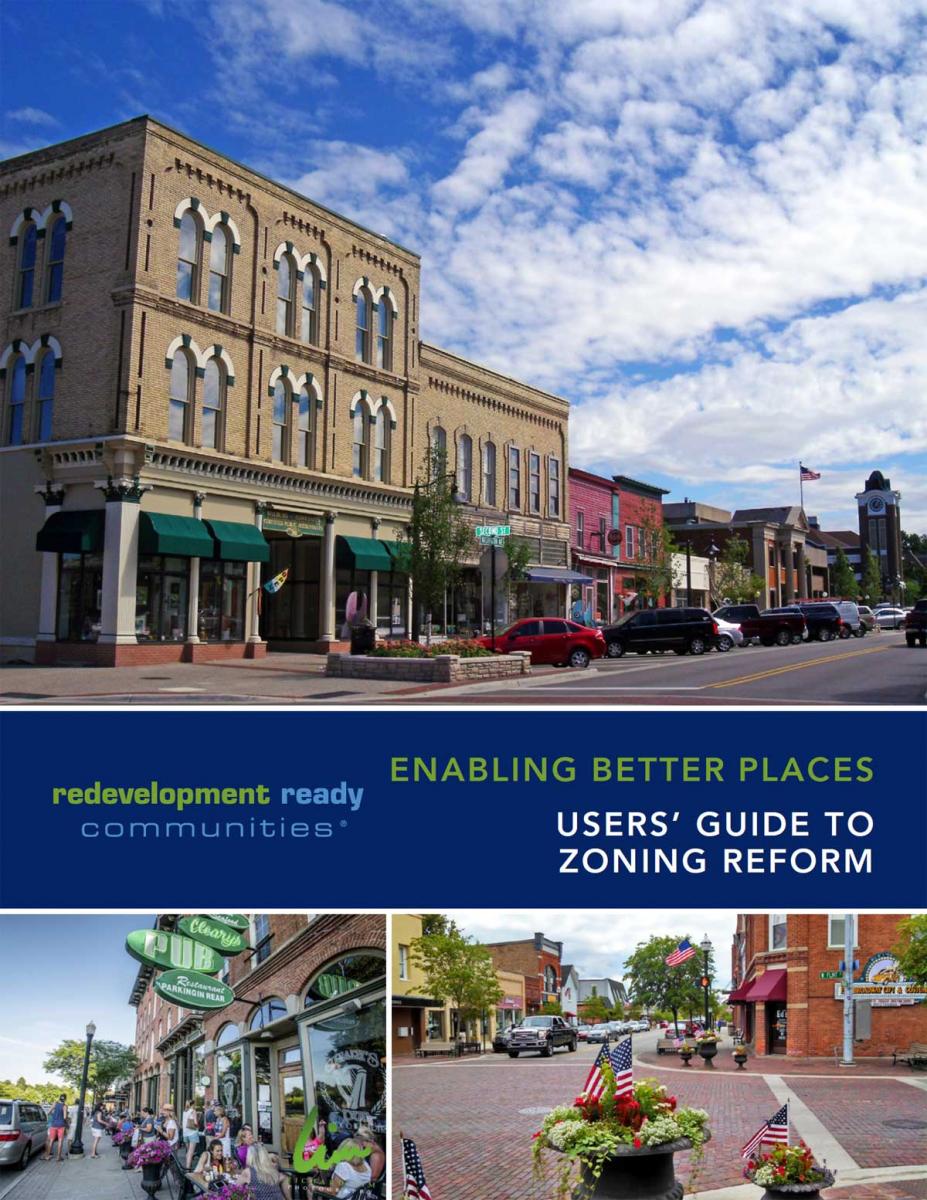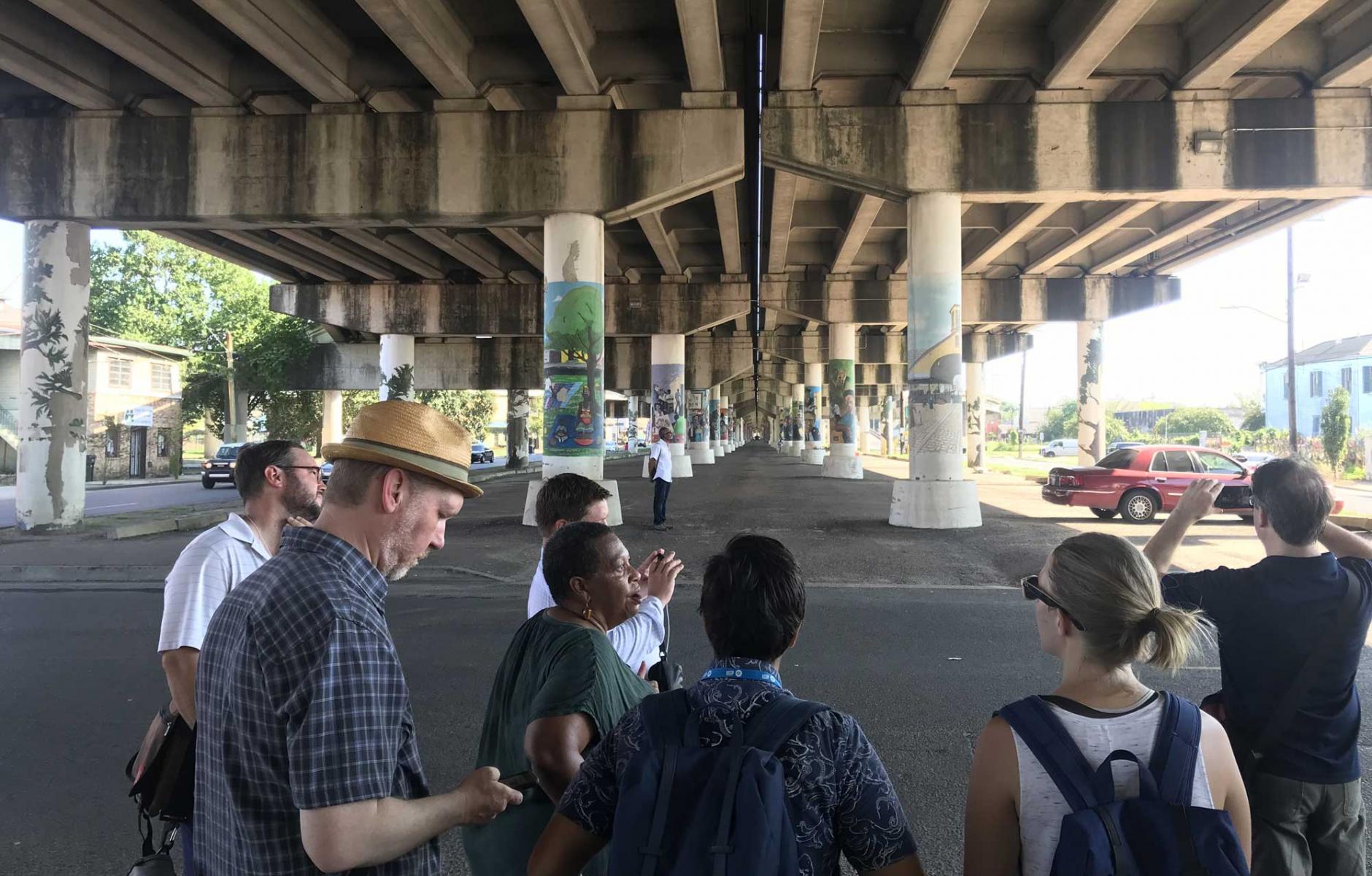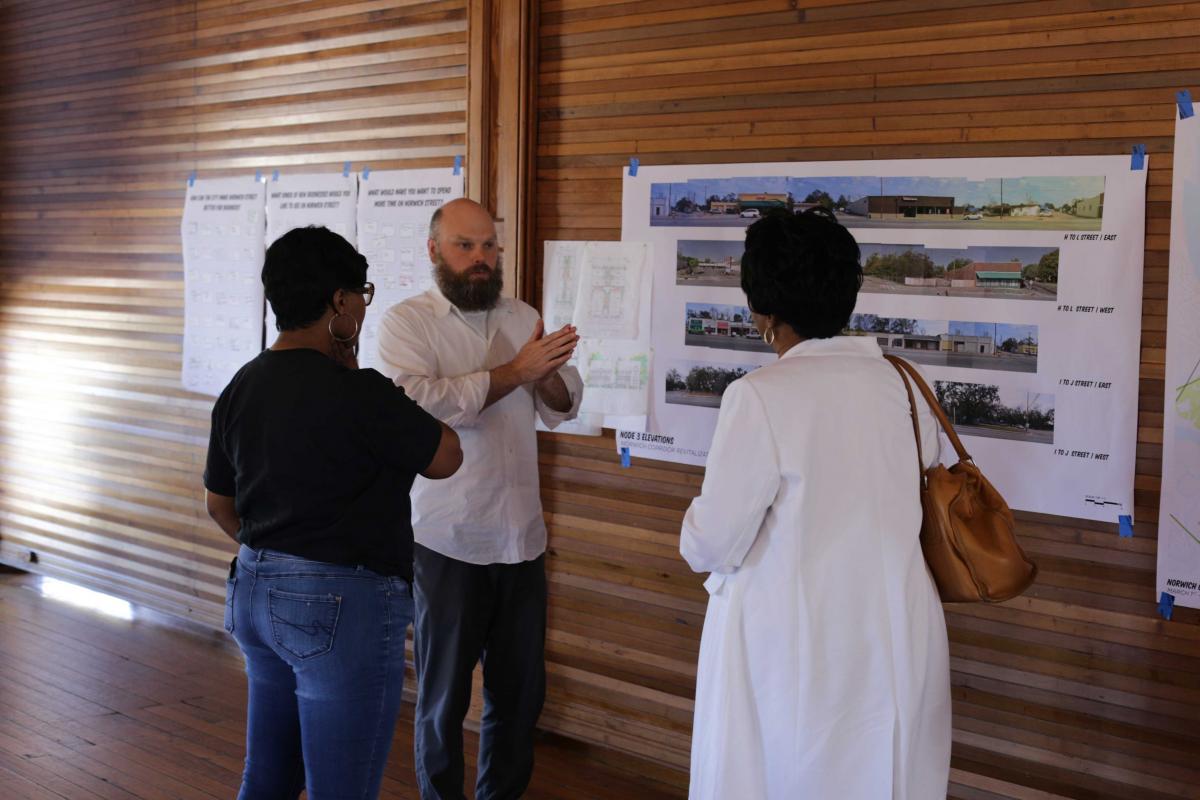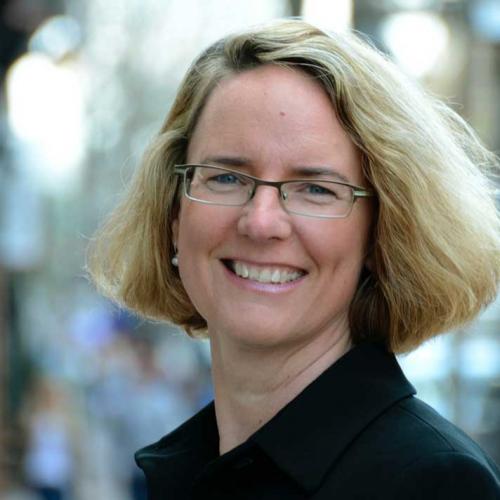
2018 in review and a preview of 2019
CNU has inspired change. Our ideas and approaches have been adopted and implemented by allied (and not-so-allied) organizations, state and local governments, and urban design and development professionals throughout the U.S. and abroad. Just look at Rob Steuteville’s 25 Great Ideas to see the breadth and depth of our ideas, and how they have permeated so much of the conversation about where and how cities and towns are designed and built.
But we are not a movement that sits still. Always innovators, we seek new ways to create people-centered places. The 21st Century is filled with challenges including addressing climate change, providing more affordable and middle class housing, capitalizing on new mobility opportunities, and supporting social equity and inclusion. What’s next for us?
In August I wrote about the evolution of the New Urbanist movement. We launched #NUFuture, an intentional, ground-up effort to identify and articulate goals for New Urbanism. These goals will guide our purpose, our work, and our passions for the next 10-20 years, helping us accelerate and fully realize the vision of The Charter. Since that announcement, conversations and debates have sprung up everywhere. These conversations are taking place on social media and listservs, gatherings of collaborators, in meetings, and over drinks. We tapped the wisdom and talent of CNU’s National Board, the Founders, NextGen, and formed an Allies Council—an intergenerational, diverse group of CNU members, like-minded organizations such as AARP, the National Main Street Center, and local government representatives. Not surprisingly, many of the conversations focused around similar themes, including:
- How can we contribute to global Climate Change solutions?
- What design solutions address mitigation/adaptation?
- How do climate migration and economic development impact our work?
- How can cities plan for a climate-responsive future?
- How can we impact the future of Mobility Solutions and Innovations?
- How do we accelerate arterial transformation with dedicated rights-of-way for buses and sensible accommodations for autonomous vehicles?
- How do we manage automated vehicles across the Transect?
- How is mobility achieved within the “in-between” areas?
- How can we provide viable Housing and Transportation for the underserved?
- How do we address the crisis of housing affordability for the poor, the aging, immigrants, climate migrants, and others?
- What are the design and policy solutions to housing affordability, accessibility challenges, migrant housing needs, refugee resettlement programs, and worker and middle class housing?
- How can we revitalize, support, and mobilize the forgotten urbanism of our disinvested cities and neighborhoods?
- How do we support and facilitate incremental improvement in our disinvested and depopulating cities and neighborhoods?
- How do we design cities that secure meaningful work opportunities and promote shared investment in place?
- How can we help prepare these places to receive climate migrants?
- How do we help cities and towns respond to fewer federal resources?
- What innovations are needed in financing structures and how can we inform a more accurate valuation of existing built assets?
- How can we restructure the development process to encourage incrementalism?
- How can we adapt commercial real estate to the profound changes that resulted from the shift in retail experience preferences?
This is nowhere near a complete list of the ideas generated over the past seven months, but it represents some of the common themes discussed. Many of the ideas generated integrate the existing work of the organization and movement but bring added focus to new or emerging challenges facing many of our neighborhoods, towns, cities, and regions. More member conversations and debates will continue in 2019, and at the next Congress we will narrow and refine these ideas and goals. Determining and agreeing on a set of goals will provide us—the organization, the movement, and allied organizations—specific direction for how to tackle some of the most pressing problems of the 21st Century and fulfill the vision of The Charter.
The goals articulated in NUFuture discussions have matched much of the activity at CNU National. We are developing programs to respond to the challenges facing many communities today, including changing codes across an entire state, connecting with community-led highway teardown campaigns, and publicizing emerging strategies for inclusive development. Read on to learn more about what we did in 2018 and have planned for 2019.
CNU released its first major report, Enabling Better Places: Users’ Guide to Zoning Reform, as part of The Project for Code Reform. This code reform initiative provides incremental coding revisions that meet local governments where they are. “If you do nothing else, do this” is the mantra for planning directors and local governments when taking a concrete first step in the code reform process. This Guide was developed with the particular zoning challenges and legal structure unique to Michigan and in partnership with the Michigan Municipal League, AARP Livable Communities, Michigan Chapter of the American Planning Association, and, with support from the Michigan State Housing Development Authority and Michigan Economic Development Corporation. In 2019, we will be developing the suburban companion document, working in more states, and publishing a high level findings document with AARP.

Our goal is to reach 42,000 local governments with zoning authority in five years. Working collaboratively with state partners on the development and dissemination of code reforms, we have begun creating state-specific guides that will enable us to reach this goal.
In September, CNU hosted a Transportation Summit: Accelerating Highway Transformation in New Orleans, Louisiana. The Summit catalyzed collaborative efforts between CNU professionals and existing community-led efforts focused on highway teardowns. Collaborating with these campaigns enables us to strengthen local efforts on mobility and transportation innovation. This summit spawned two new joint efforts. One partnership is between CNU, CNU members, and the City of Memphis. The goal is to demonstrate how cities can look and function in an era of autonomous vehicles. Stay tuned for more details on the five-day public charrette scheduled for Spring 2019. Additionally, CNU will be collaborating with Reconnect Austin to develop targeted Highways-to-Boulevards materials to support their campaign to re-knit the urban fabric of Austin, Texas.

Also in September, the CNU National Board formally adopted an inclusion statement reflecting the organization’s renewed and expanded commitment to equity and inclusion. For more than two decades, CNU’s work has been rooted in working at the building, block, neighborhood, city, and regional scales to create more inclusive and equitable communities. Our early work with the US Department of Housing and Urban Development (HUD) created responsibly scaled design guidelines for the HOPE VI program and more recently we’ve advocated for the removal of elevated urban freeways that have torn apart established neighborhoods. That said, there is still more we can do, and the Board’s statement is a recognition of our ongoing dedication to inclusive and equitable communities.
This expanded commitment is reflected in our partnership with the Westside Future Fund, with whom CNU organized and facilitated a one-day Historic Westside Atlanta Symposium on Inclusive Development. This Symposium focused on innovative housing solutions, and equitable development for the Westside of Atlanta, Georgia. Community-generated approaches that engage local talent in areas of disinvestment were documented, ensuring that revitalization remains anchored in community needs and vision. Our soon-to-be-released Building Local Strength: Emerging Strategies for Inclusive Development, highlights examples of how neighborhoods can revitalize in ways that minimize displacement and increase access to opportunity.
Looking internationally, in April, CNU was selected as an official Urban Design Provider to the Chinese government. Chinese cities can now request CNU training and design assistance from the Chinese State Administration of Foreign Affairs Experts (SAFEA). Calthorpe Associates and the Energy Foundation were essential partners in CNU securing this designation.
People who are hungry for ideas come to CNU. They come to our website, Public Square, and social media platforms for inspiration, knowledge, to learn about what they can do, and what our members are doing. For example:
- In 2018, more than 6.6 million people checked out what we were doing and saying across all social media;
- In addition to Enabling Better Places, 25 Great Ideas, and the 2018 Charter Awards book, CNU partnered with the Metropolitan Area Planning Council in Boston to write Reclaiming the Strip Mall: A Common Suburban Form, Transformed. These three case studies document strip mall retrofits in Dallas and the greater Boston area. Based upon the success of this report, additional suburban retrofit case studies are scheduled for publication in 2019;
- More than one-million people visited CNU.org, and Public Square was read by over 440,000 people last year. CNU’s thought-provoking, idea-rich articles report on, analyze, and energize the New Urbanism movement. Publication of our tools help facilitate independent efforts that we may not hear about until their successes are realized. The top five articles from 2018 published in Public Square are:
- Finally, we launched a project database that features New Urbanist Projects from the US and around the world. While far from complete, in 2019, we will continue to add and map projects.
AND ... CNU’s flagship event, our annual Congress, gained even more traction in 2018. Through great collaboration between CNU National, the Savannah Local Host Committee, our sponsors, and the work of volunteers and presenters CNU 26.Savannah had record-breaking attendance. We drew over 1,600 participants from 48 states and 24 countries and nearly 30 percent of attendees represented government agencies on local, regional, state and federal levels (up from 9 percent at CNU 22.Buffalo.) Click here for the best of CNU 26.Savannah Congress highlights. Our upcoming Louisville Congress (June 12-15) promises to match or exceed the Savannah Congress.
In addition to exploring sessions and the city, seeing old friends, and meeting new ones, CNU led three Legacy Projects in Savannah and Brunswick, Georgia. We brought nationally renowned urban designers and knowledgeable and talented local design and program teams to conduct a weekend-long charrette in each project area. This design assistance in underserved neighborhoods is how CNU and its members give back to our host cities, providing them with expertise that they could not otherwise afford.
The challenge for the Southside Suburban Retrofit Project was to transform a car-centric, suburban development near the Armstrong Campus of Georgia Southern University into a more compatible series of connected neighborhoods. Design solutions that result in more walkable development and greater alignment between the Southside and the historic downtown core of Savannah were developed.
Sponsor: City of Savannah.
Design Team: David M. Schwarz Architects, Hall Planning & Engineering, and Gibbs Planning.
Savannah’s Eastside Redevelopment Plan
CNU responded in force to a call for the re-development of Savannah’s Eastside into an emerging economic district and purpose-built neighborhood. Goals articulated during the public engagement portion of the charrette include improving transportation connectivity, housing, and services. The final report resulted in creative, realistic, and implementable plans that will guide future development toward opportunities for community growth and prosperity.
Sponsor: City of Savannah.
Design Team: Led by Dhiru Thadani, the design team included team Zimmerman/Volk Associates, Brown Design Studio, Kevin Klinkenberg, and Robert A.M. Stern Architects
Norwich Street Corridor Revitalization Plan
The Legacy Design Team explored the revitalization of a languishing 21-block, 2 mile-long commercial thoroughfare. Norwich Street, with high vacancy rates but good urban “bones,” has strong redevelopment potential for the coastal city that 16,000 people call home. The final report concentrates on ways to actualize locally inspired, context-sensitive ideas that will contribute to the revitalization of Norwich Street Corridor. Proposals include streetscape improvements, incremental affordable housing, and leveraging market potential for a thoroughfare that was part of the old Dixie Highway, once the major connection between Florida and northern cities.

Sponsor: City of Brunswick, Georgia
Design Team: Kronberg Wall Architects, Georgia Conservancy, Symbiocity, Bleakly Advisory Group, Thompson Placemaking, and Canvas Planning.
I was recently asked by someone at a non-CNU event if I was an urbanist. The word “urbanist” was uttered with slight disdain, in the same way I’ve been asked if I’m a “feminist.” Yes, I replied strongly. I AM an urbanist. I believe in the power of place, in the power of design, and in the power of creating places for people. That’s what we do.
CNU amplifies and adds value to the conversations that help plan, design, and build more walkable, vibrant—new urbanist—neighborhoods. But, we don’t do it alone. We do it with you—our members—as friends, partners, collaborators, and co-conspirators.
So game on. For the last 25+ years, our ideas and work have changed how people think about cities, growth, and development. We are now pushing forward to bring design solutions to the most pressing problems facing the 21st Century. Are you with me?




